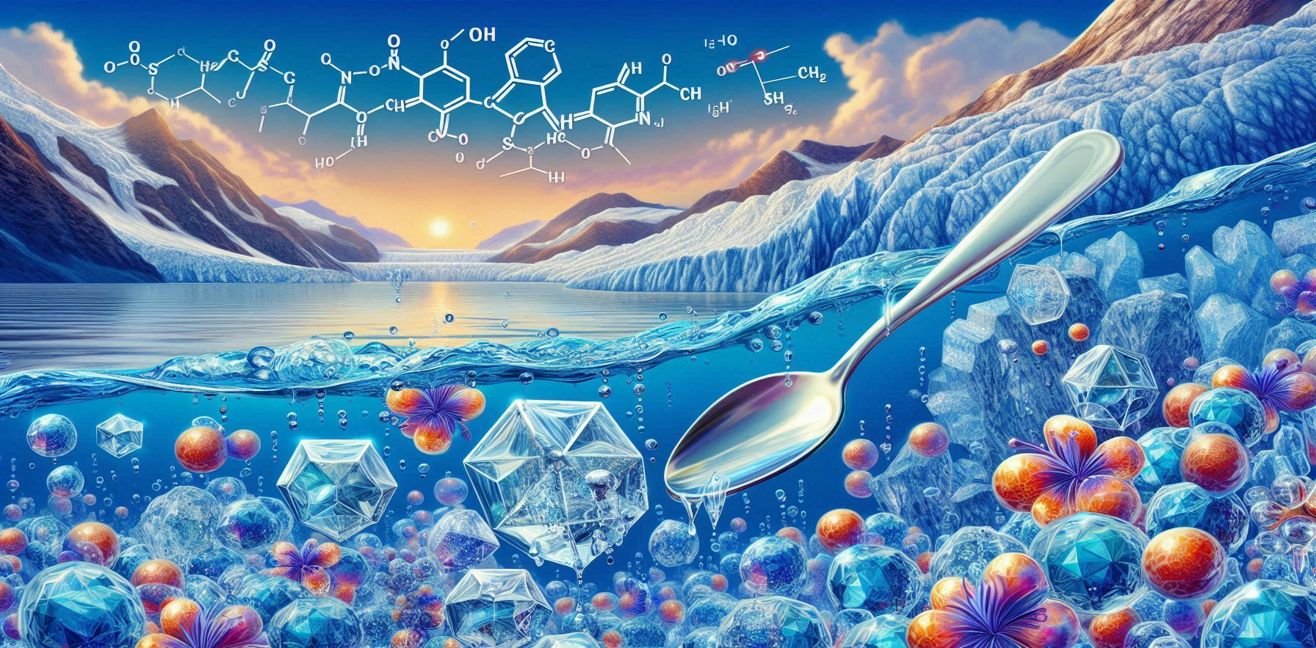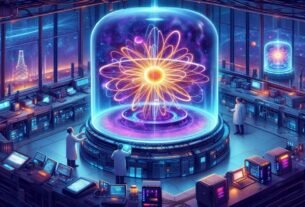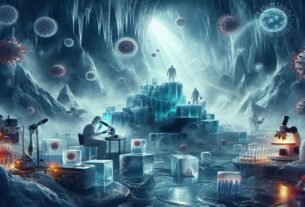Hello, dear science, nature, and everyday life enthusiasts! 💫 Today, we invite you into the mysterious world of water and ice. In this article, we won’t just explain “why your iced drink melts”; we’ll also explore the molecular structure of water, its expansion upon freezing, thermodynamic properties, and geophysical effects. Are you ready? Because this post will be both technical and fun! 😏💧
🌡️ Water Molecule and the Secret of Hydrogen Bonds
Water (H₂O) is one of the simplest yet most extraordinary molecules. Here’s why:
- Hydrogen bonds: Each water molecule consists of two hydrogen atoms and one oxygen atom. The negative pole of the oxygen attracts the positive poles of neighboring water molecules → forming hydrogen bonds.
- Angular structure: The water molecule has an angle of approximately 104.5°, which affects water’s density, surface tension, and freezing behavior.
- Universal solvent: Thanks to its polar nature, water can dissolve ionic and polar substances, making it critical for biological and chemical reactions.
❄️ Molecular Dance and Expansion During Freezing
Most substances contract as they cool, but water behaves oppositely around 0°C and expands. Here’s the scientific explanation:
- Liquid water molecules are in motion and closely packed.
- As water approaches the freezing point, molecules arrange into a hexagonal crystal lattice.
- This lattice occupies about 9% more volume than liquid water.
- Result: Ice floats on water, protecting aquatic life in lakes and oceans. 🌊🐟
Thermodynamic Perspective
Water releases heat as it freezes (latent heat of fusion ≈ 334 J/g). This energy loss reduces molecular kinetic energy and allows the formation of an ordered crystal lattice. The process can be explained with changes in enthalpy and entropy:
- Enthalpy decreases → the system loses energy.
- Entropy decreases → molecules become more ordered.
Thus, freezing involves both energy transfer and structural reorganization.
🔬 Physical and Chemical Properties of Ice
Ice is not just frozen water; it’s a molecular engineering marvel combining physics and chemistry:
- Density: Ice density ≈ 0.917 g/cm³ (lower than liquid water).
- Thermal conductivity: Ice has lower thermal conductivity than water, providing natural insulation (subglacial water doesn’t freeze).
- Crystal structure: Ice mainly has a hexagonal lattice, influencing its buoyancy and expansion.
- Optical properties: Air bubbles scatter light, making ice appear either transparent or opaque.
- Mechanical properties: Ice is brittle with sharp crystal edges, which is why ice axes, sculptures, and technical applications are possible.
🧪 Ice Experiments in Everyday Life and the Lab
Here are some fun and scientific experiments to explore the mysteries of ice:
- Ice and Salt Interaction: Salt lowers water’s freezing point (depression of freezing point). Sprinkling it on ice accelerates melting → a fun demonstration of chemistry and thermodynamics. 🧂❄️
- Colored Ice Crystals: Freeze water with food coloring and observe crystal formation. Molecular ordering and diffusion become visible. 🎨
- Ice and Metal Interaction: Hold an ice cube with a metal spoon. It melts faster due to differences in thermal conductivity and energy transfer. ⚡
🌎 Geophysical and Ecological Importance of Ice
- Glaciers: Play a crucial role in global climate regulation and sea-level balance.
- Ecosystems: Ice’s buoyancy protects aquatic life in lakes and seas.
- Climate sensors: Ice sheets record changes in atmospheric and ocean temperatures → helping us understand climate change.
- Engineering: Freezing and expansion properties are considered in structural design and energy systems.
✨ Conclusion: Ice and Water – Nature’s Hidden Engineering
Water and ice may seem ordinary in daily life, but they are molecular, thermodynamic, and geophysical marvels. Expansion during freezing, ice buoyancy, thermal insulation, and energy balance reveal the magical side of physics and chemistry.
Next time you sip a cold drink, remember, my love: every ice cube is the result of millions of years of natural processes, molecular dances, and energy balances! 💡🧊




